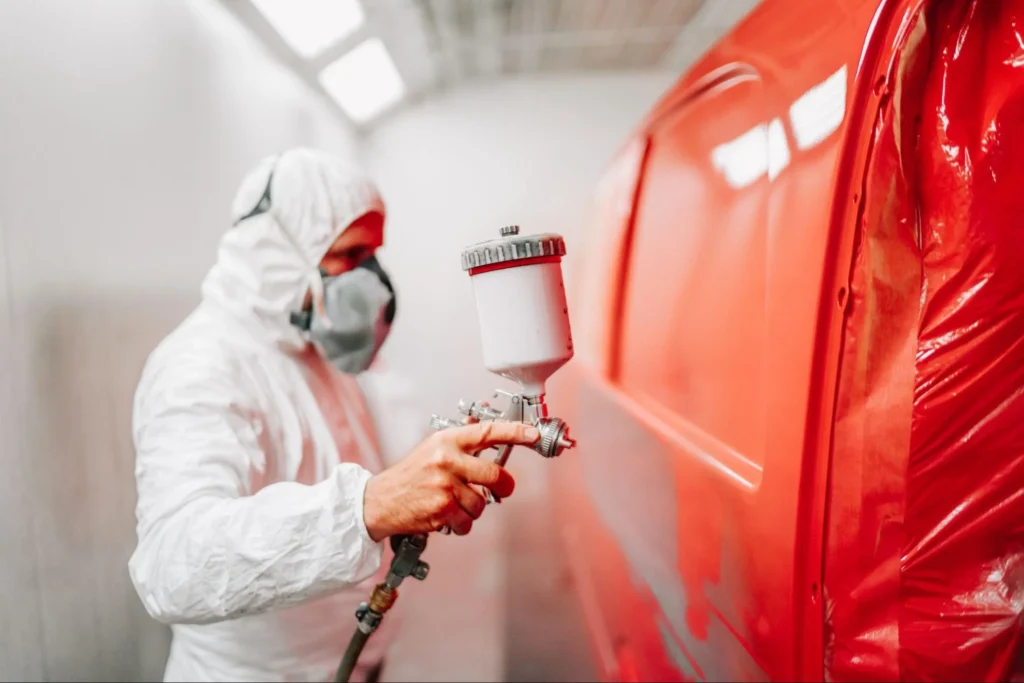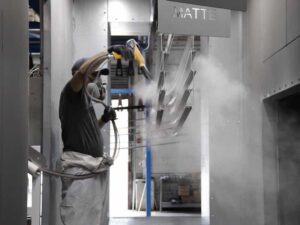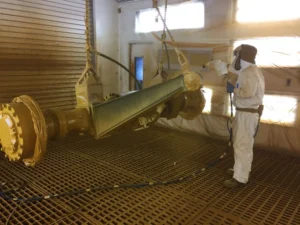For decades, liquid painting has been the norm in the business of coating metal parts and products. However, powder coating has been rising in popularity, and with good reason: it offers better performance, health and safety, and a significant reduction in costs compared to wet painting. If you’ve been wondering how to switch from one coating process to another, this guide to converting from liquid paint to powder coating will answer all your questions.
Powder coating has been around since the 1950s, but only lately has it gained recognition as a finishing process that stands out in durability and ease of use. It is available in a wide range of colors and textures and used in any significant manufacturing industry today – from construction materials to automobiles to appliances to aircraft and more.
This post will explain in detail what powder coating is, how it differs from liquid paint, what benefits you can expect from it, and how converting to powder coating will aid your business in the future.
Coating Chemistry
All differences between wet paint and dry powder stem from their different chemical compositions.
Liquid Paint
The natural state of wet paint is, unsurprisingly, liquid. Thanks to the different types of solvents it contains, wet paint comes in a suspended liquid form. It is easy to mix and match different colors to get the one you want. (For example, by combining blue with white paint, you get various light blue shades.)
Liquid paint also contains volatile organic compounds, commonly referred to as VOCs. These compounds evaporate into the air and are flammable and toxic to the environment. They are also harmful to human health, potentially causing a range of respiratory illnesses and other medical conditions, such as cancer.
Aside from solvents and VOCs, liquid paint comes with various pigments, additives, and resins.
Dry Powder
Powder also has a variety of additives, resins, and pigments.
Based on the type of resin in the powder, we can distinguish between two powder coatings:
- Thermosetting powder coating: Thermosetting coating melts and flows when exposed to heat. After it creates a uniform coating, it forms additional crosslinks when exposed to more heat. Examples of this type of powder coating include resins made from polyvinyl chloride, polyester, and nylon.
- Thermoplastic powder coating: Thermoplastic powder also melts and flows when heated up, but its chemical composition stays the same once it cools down. These powders have polyester TGIC, acrylic, epoxy resin, and others.
The powder doesn’t contain a solvent, which is why it is in solid form (finely ground particles). As a result, it is more challenging to mix powder colors. If we use the same example above, mixing blue and white powder won’t give light blue powder, but a spackle of blue and white particles. For each new hue of powder you want, a special powder has to be manufactured.
However, because it doesn’t contain any solvents or VOCs, the powder is infinitely safer than conventional liquid coating. It isn’t flammable, doesn’t pose a health risk, and isn’t an industrial pollutant.
Coating Application
Despite the significant differences in their chemistry, liquid coating and powder coating have a similar application.
The pretreatment phase is the same: the metal surface must be adequately prepared for coating by being thoroughly cleaned. Any trace of moisture, oil, or dirt will interfere with the adhesion process and won’t provide a good result.
Once the surface preparation is complete, the metal product can proceed to the painting phase. Both coating applications mandate a spray booth – an enclosed space dedicated only to the coating process.
Liquid Paint Application
To apply a wet coating, a spray gun is required. It can be a spray gun that uses high-volume, low-pressure (HVLP) technology, airless technology, an electrostatic gun, or similar. The purpose of the gun is to disperse the atoms of the paint towards the metal surface.
Once the surface is coated with paint, it can be left to air dry. Manufacturers that want to speed up the process can invest in curing ovens for temperatures between 130 and 170F.
Depending on the type of paint and its color, wet paint may require more than one color coat and a clear coat on top for extra texture or shine.
Powder Application
The powder coating process is most commonly performed in two ways:
- Electrostatic Deposition (ESD): For electrostatic deposition, a spray gun is also used, much like wet painting. This is an electrostatic spray gun that charges the powder particles as they are shot through it. The electrically-charged particles are attracted to the electrically grounded surface of the metal and adhere better to it.
- Fluidized Bed: A fluidized bed is essentially a tank with a porous bottom. In this tank, the powder is suspended, and the powder coating application consists of dipping the metal part into the tank.
Once the metal product is coated, you cannot leave it to air dry. It needs to be cured in a curing oven at temperatures over 400F.
Benefits of Switching to Powder Coating
If you decide to convert from liquid painting to powder coating, there are certain benefits you can expect.
Safer Work Environment
We’ve already mentioned how VOCs of wet paint are toxic for the environment and unsafe for human health. Operators who work with liquid coating must wear protective gear, including special masks. The liquid spray booth needs to have proper ventilation at all times so that the toxic fumes are aired out regularly.
Liquid paint is also flammable, so you have to be careful how you store it. Any thoughtlessness in this department can easily lead to a chemical fire and severe damage.
Not only that, but wet paint is an industrial pollutant that falls under strict environmental regulations. Any paint overspray needs to be collected and carefully disposed of to meet all of these regulations.
In comparison, you don’t have to worry about any of that with dry powder.
It doesn’t contain any VOCs and therefore isn’t toxic for the environment or the operators. They are required to wear protective gear, but only simple dust masks while working.
The powder can combust in a specific concentration of air and powder. Still, because it doesn’t have any solvents or VOCs, the fire risk is nowhere near as severe as that associated with traditional paint.
Furthermore, the powder is not a pollutant. It is considered a non-hazardous/landfill material, so you don’t need to go through additional lengths to properly dispose of it.
When faced with a work environment that is nowhere near as hazardous as a liquid paint booth, powder coating operators report higher job satisfaction and a more rewarding work experience overall.
Increased Productivity
Because liquid paint can drip and sag, achieving a uniform coating is a difficult task. If a mistake is made during the coating process, it takes a lot of time and money to correct it.
If you choose to go the powder coating route, you will find that mistakes are so much easier to correct (if caught before the curing process). The powder is easier to apply; operators in this area don’t have to undergo extensive training to learn how to handle it properly.
Because of the curing, powder-coated parts dry incomparably faster than liquid-painted ones. You can expect to finish more parts per day than you used to when working with wet paint. One case study suggests that a manufacturing company managed to coat between 900 and 2000 additional items per day compared to their liquid painting process.
Once a metal part is finished with curing, it doesn’t have to be handled carefully – it can proceed right to the next step in the production, whether assembly or packaging. It is also much faster and easier to maintain and clean a powder coating facility.
Return on Investment
There are examples of companies expecting to meet their return on investment (ROI) five years after converting to powder coating; instead, they achieved it in only one.
It may be hard to believe given the high upfront costs a powder coating booth demands, but you can expect to save money in several areas:
- Reclaiming powder overspray. Any excess powder that doesn’t land on the metal surface can be recollected and reused.
- Greater yield. More coated parts per day equals more sold parts per day.
- Reduction in utility costs, such as water, gas, and electricity.
- Improved application efficiency. Fewer mistakes are made because the powder doesn’t run or drip.
- No expenses for hazardous waste disposal.
- No expenses for training operators.
If you have been using third-party powder coating services, you may still expect to save money by installing a powder coating system in your facilities. It all depends on the size of your business and how often you need to coat metal parts. Some organizations have calculated that a liquid coating system costs them around four times more than a powder one!
Durability and Customer Satisfaction
The primary reason why metal products are coated isn’t just a decorative one. Proper surface finishing offers corrosion resistance, chemical resistance, and protection from environmental damage, such as moisture, wind, direct sunlight, heat, etc. If any part of the coating gets scratched or chipped, the entire product looks terrible and loses its protective barrier.
Industrial powder coating has more durability than liquid coating. Because of the curing process, powder coating goes through thermal bonding, allowing it to adhere even better to the surface. Additionally, you can apply the powder in a thicker layer than wet paint. It is resistant to scratching, chipping, and other forms of wear, making it ideal for coating outdoor products.
With a powder, operators can apply a more uniform layer of color. What’s more, powder metal coating fades less over time than liquid coating.
When exposed to the elements, resins in both coatings tend to break down. This process is called chalking, where powder starts to form a chalk-like substance on the surface. It loses its adhesion properties and quickly falls off.
Chalking first leads to a faded appearance, but it can erode the coating and compromise surface protection if it continues. A powder coat is more resistant to chalking than conventional liquid paint, especially powder that is based on polyester.
Customers will be inherently more satisfied with products with a durable coating and are more resistant to rust and other types of damage. They will also appreciate the color’s vibrancy and how it doesn’t fade for long periods.
Liquid Booths vs. Powder Booths
If you’re already performing liquid painting in your facilities, you may be tempted to use the same space for powder coating. Technically, this is possible, but it is not recommended in any way.
Usually, liquid spray booths are designed for larger airflow that quickly sucks out the toxic paint fumes. It would be counterproductive for a powder since the powerful airflow would be pulling the powder away from the metal surfaces you’re trying to coat.
You should also avoid using liquid and powder coating in the same booth. The booth filters would get plugged up fast, and it would severely compromise your workers’ health because the paint VOCs would have nowhere to go.
If you’re serious about your powder coating operations, you will invest in a separate powder coating system built specifically for the purpose and your business’s needs.
Basic Booth and Oven Requirements
It is common for liquid coating operations to exhaust their fumes outside of the building. However, this cannot be done with powder coating, as it would leave a new finish wherever the powder lands, especially in hot weather. A powder coating booth should be designed in such a way as to prevent excess powder from overspray getting outside.
If you intend to do any high-volume coating, you should consider investing in a reclamation system.
- Single-color: A single-color reclamation system is typically made from stainless steel and is cartridge-based.
- Multicolor: Multicolor systems, on the other hand, are made from plastic and therefore easier to clean. They are designed for a quick change of color.
Interior walls made of a type of polymer will prevent powder from adhering to them.
Curing ovens for powder coating need to operate anywhere from 350 to 400 degrees F. For proper curing – where the powder particles form a chemical bond that provides a smooth finish – the substrate has to be in the oven for at least 10 minutes.
Are there any opposing sides to powder coating?
Powder coating is an excellent solution for most businesses. However, there are situations where you can’t achieve what you want with powder coating and where liquid paint is better.
Here are some examples of that:
- Coating parts that are made not only of metal but also other heat-sensitive materials, such as rubber. These parts cannot go into a curing oven at high heat to dry.
- Coating huge parts that cannot fit into a curing oven or cannot be moved easily.
- Achieving a thin coating. The powder is not great for thin layers, while you can apply wet paint as thinly as 0.5 mils.
It is also important to mention that liquid coating requires a lower starting investment. Equipment for wet painting is more readily available and less expensive than for powder coating. However, with liquid paint, you cannot expect a similar return on investment. The liquid material is more costly than powder coating material, and you cannot reclaim it.
Conclusion
Switching from wet paint to powder coating is not a small feat. You can opt to run both coating operations parallel until you change entirely to powder, or you can immediately shut off your liquid painting processes and convert to the other one. Either way, significant planning, organization, and rehaul of your facilities are in order.
You cannot use the same type of booth for both applications for the simple reason that the coating material is chemically different. Liquid paint releases toxic fumes and volatile organic compounds. It is flammable and needs to be carefully stored. On the other hand, the powder is dry and non-toxic for the environment and the operators handling it. Booths designed for powder require less airflow.
The benefits you will enjoy from switching to powder coating are innumerable:
- Increased productivity and efficiency because of easier handling and faster drying.
- Reduced costs due to powder reclaiming (less wasted material), less need for personnel training, no expenses for hazardous waste disposal, and more.
- Increased durability of the protective coating and higher customer satisfaction.
- A safer working environment because of the elimination of toxic VOCs and solvents. Workers who are happier and more comfortable operating in a healthier workplace.
Indeed, some metal parts cannot be coated using powder, mostly because of the curing process’s limitations. However, if you’re serious about your coating business, you won’t hesitate to invest in a robust powder coating system. To help you in this endeavor, please reach out to GAT Systems. We will be happy to offer you expert advice on converting to a powder coating system and providing your business with everything it needs to thrive.





